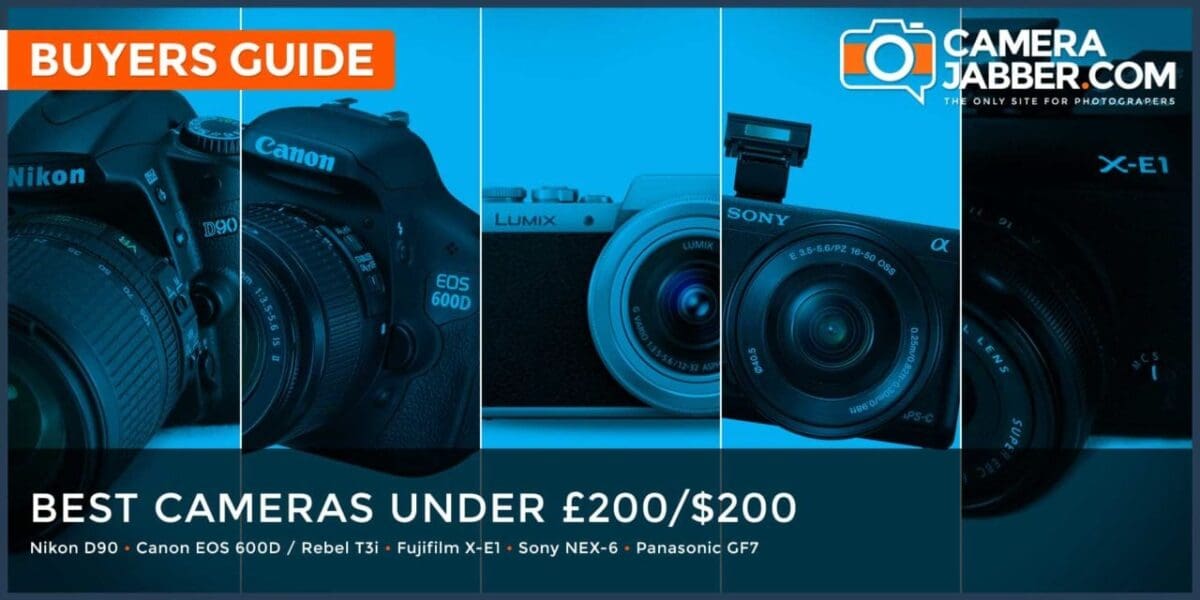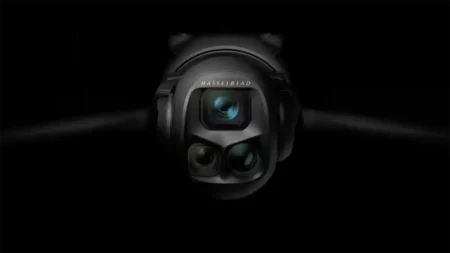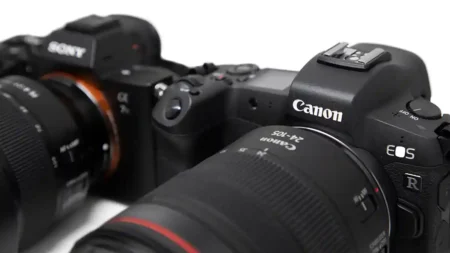As we’re sure you’re very much aware, getting into photography is by no means a cheap hobby. But, you might not realise that there’s a world of fantastic bargains out there on the second hand market if you just keep your eyes peeled.
If you’re looking for your first interchangeable lens camera, whether compact system or DSLR, you’ll probably want to spend at least £500 if you’re buying new – don’t worry, we’ve got a Best camera under £500 guide for you too.
However, if your budget is really tight, and you’re prepared to not have the latest and greatest technology, you can pick up something much cheaper.
In this round-up, I’ve found five fantastic cameras that would still make for excellent buys, especially as a gift for someone who’s just getting started. There’s two DSLRs, and three compact system cameras. All have been selected for managing to stand the test of time, even though they’re a couple of generations behind.
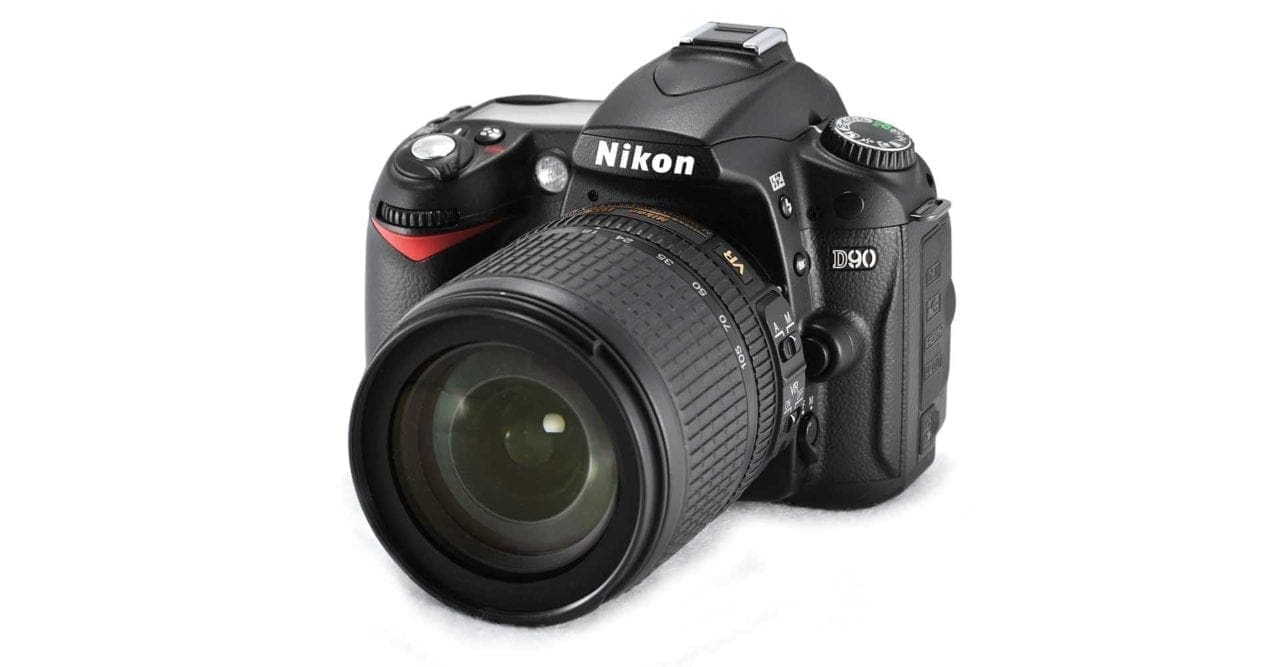
Nikon D90
The world’s first DSLR to shoot video is still a solid performer
Sensor: DX format (APS-C) CMOS Megapixels: 12.3 Lens Mount: Nikon F AF System: Multi-CAM 1000 autofocus sensor module with 11 AF Points Viewfinder: Optical viewfinder with 96% coverage Screen: 3-inch 920k-dot TFT Max Video Resolution: 720p HD Max Frame Rate: 4.5fps
Pros: Solid and dependable body, optical viewfinder
Cons: 720p HD only, Viewfinder only 96%
The Nikon D90 proved to be an extremely popular DSLR when it was launched, thanks in no small part to being the first DSLR to offer video recording. What now seems like an every day specification was quite the revolution when the D90 first came to market.
You also got a 12.3 megapixel sensor, a decent focusing module, an optical viewfinder and a high-resolution screen. While these days the video capabilities have been far surpassed, this work horse of a camera is still a good buy for those who are mainly interested in stills.
Expect to pay between £140-£200 for a second-hand D90, depending on condition. If your budget isn’t low, the modern day equivalent of the Nikon D90 can either be considered the Nikon D500 or the Nikon D7500 – both of which are also excellent models.
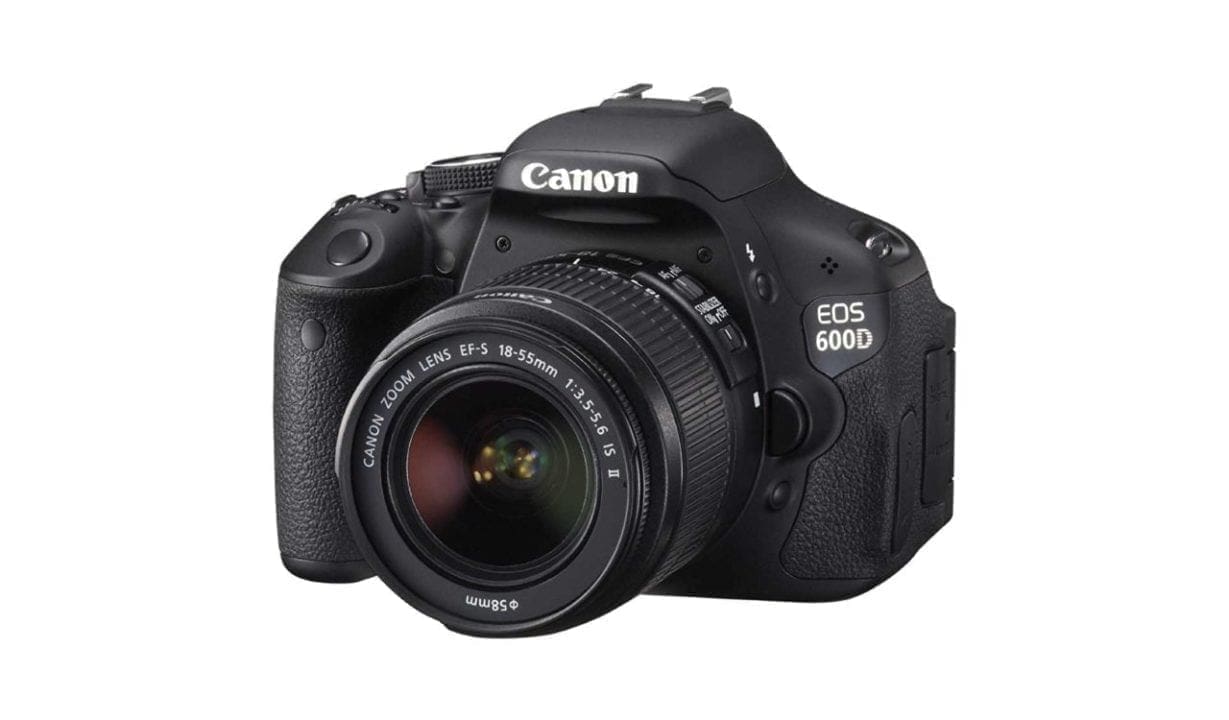
Canon EOS 600D / Rebel T3i
A great choice for beginners looking for their first DSLR
Sensor: APS-C CMOS Megapixels: 18 Lens Mount: Canon EF-S AF System: TTL autofocus module with 9 AF points, with one cross-type Viewfinder: Optical viewfinder, 95% coverage Screen: 3-inch, 1040k-dot TFT Max Video Resolution: Full HD Max Frame Rate: 3.7fps
Pros: Fully articulating screen, high resolution
Cons: Viewfinder only 95%, no Wi-Fi
The 600D / Rebel T3i is just a couple of generations old, making it a good option for those looking for a beginner-friendly DSLR but who don’t have too much money to spend. You get an 18 megapixel sensor, with a 9-point AF system which is reasonably capable.
The fully articulating screen is useful for shooting from all manner of different angles, and may be especially appreciated by videographers – Full HD video recording is also available.
You can find the 600D for just shy of £200 second-hand, but for those with a bit more money to spend, the Canon EOS 800D is the latest model in this range.
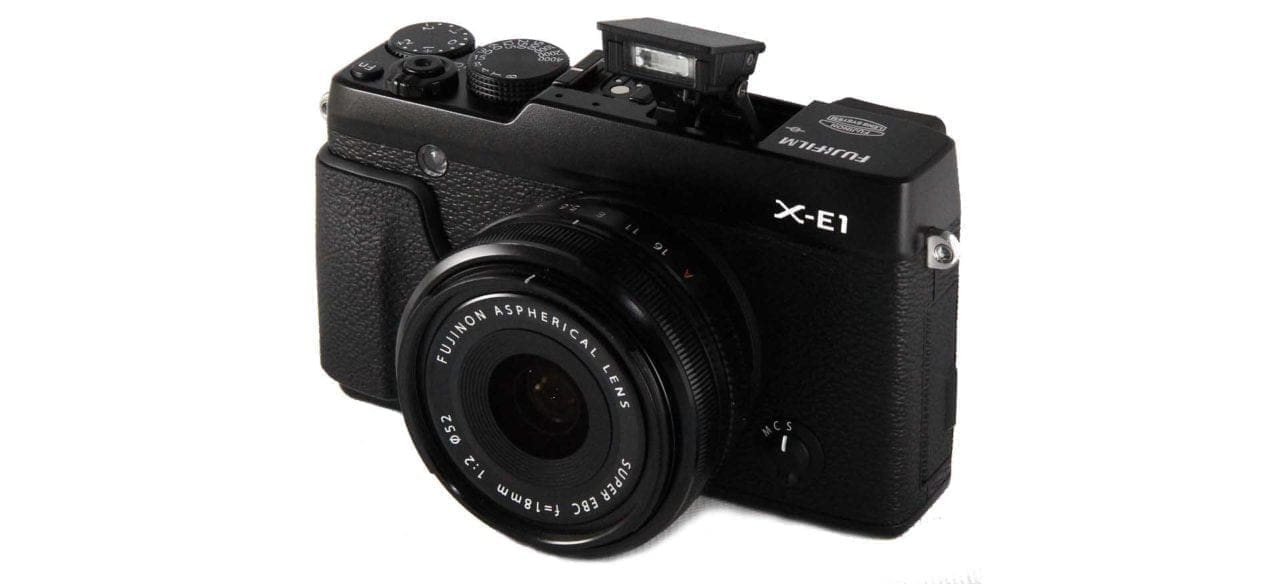
Fuji X-E1
A decent range of features in a wonderfully retro body
Sensor: APS-C X-Trans CMOS Megapixels: 16.3 Lens Mount: Fuji X AF System: TTL Contrast with 49-areas Viewfinder: 0.5-inch, 2.36m-dot OLED electronic viewfinder, 100% coverage Screen: 2.8-inch, 460k-dot, TFT Max Video Resolution: Full HD Max Frame Rate: 6fps
Pros: Attractive design, great EVF
Cons: Screen not touch-sensitive, video mode hidden
A junior version of the fantastic XPro1, featuring the same sensor in a body that’s just a little smaller, the X-E1 was first announced back in 2012.
Although now a few generations old, there’s still some great Fuji tech here – this particular APS-C sized X Trans CMOS sensor was proven to outperform some full-frame sensors at the time (including the Canon EOS 5D Mark II).
The electronic viewfinder stands up against even some of the newest devices in terms of resolution, but the screen is a little on the small side. Full HD video recording rounds out the specifications here. If you mainly shoot static subjects, the fact that the autofocusing system and frame rate isn’t on par with the latest model shouldn’t be too much of a problem.
Pick up a second-hand X-E1 for around £170, a cracking price considering it started life at nearly 6 times that price. The current version of this camera is the Fujifilm X-E3 for those who want the latest and greatest.
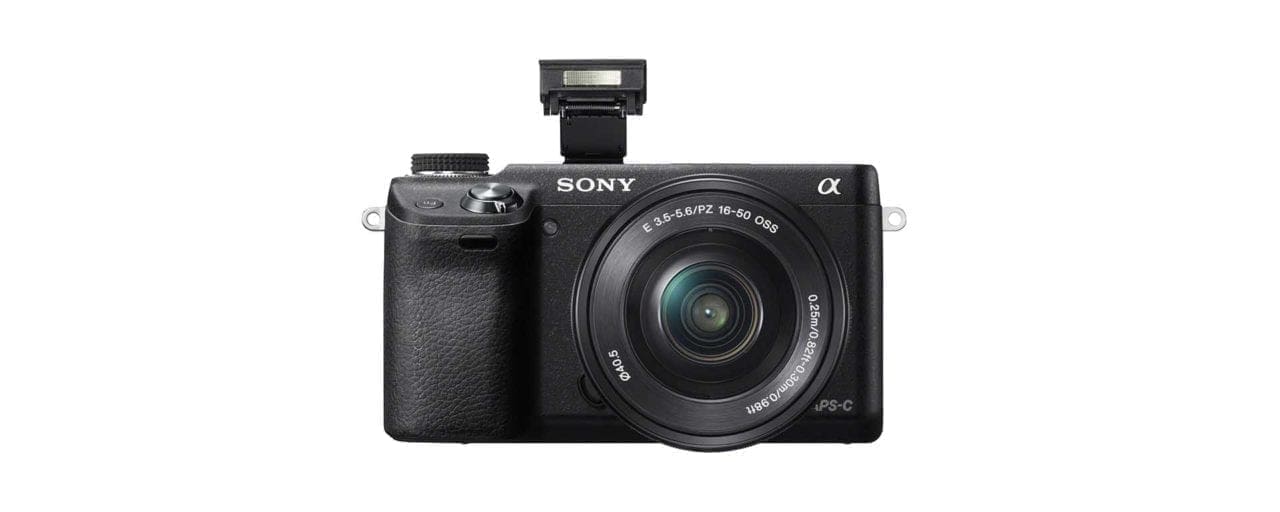
Sony NEX-6
This mid-range Sony CSC is a still a good entry into mirrorless
Sensor: APS-C CMOS Megapixels: 16.1 Lens Mount: Sony E-Mount AF System: Phase-detection and contrast-detection, 99-points/25 points Viewfinder: XGA OLED electronic viewfinder, 100% coverage Screen: Tilting 3-inch, 921,600 TFT Max Video Resolution: Full HD Max Frame Rate: 10fps
Pros: Inbuilt wi-fi, high-resolution viewfinder
Cons: Screen not touch sensitive or articulating, fiddly buttons
Hands up if you remember the “NEX” moniker? When Sony first launched its compact system camera range, they all bore this slightly strange name. The NEX-6 was a great enthusiast level CSC at the time, with an APS-C sized sensor, great viewfinder and a tilting screen.
The autofocusing system is pretty good, while you’ve also got 10fps shooting on hand too. All in all a great deal considering you can expect to buy a second-hand NEX-6 for between £150-£180 depending on condition. If you’ve got a bit more money to spare, the current Sony A6000 is a great choice, too.
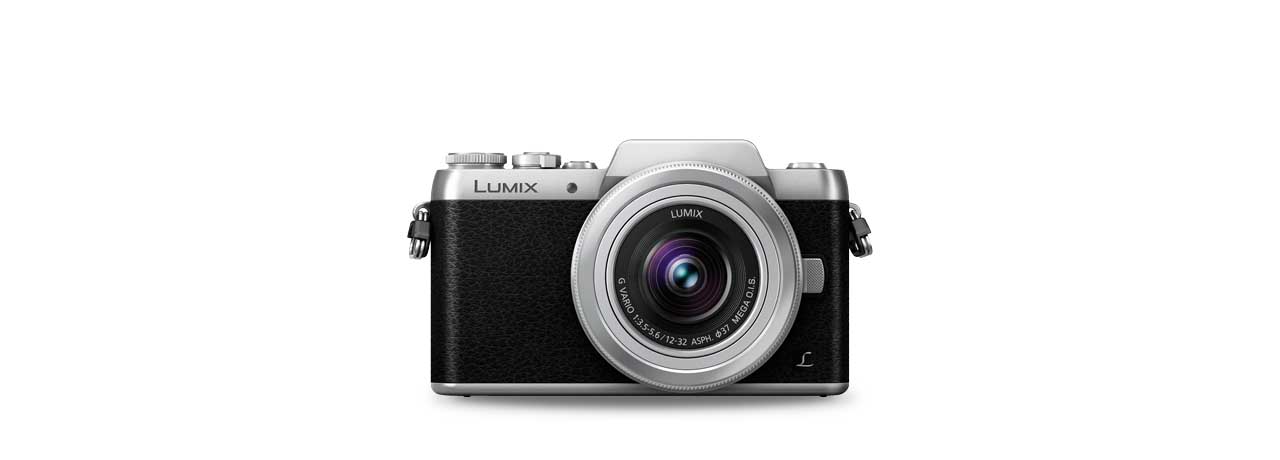
Panasonic Lumix GF7
An almost pocket-friendly CSC which is great for shooting on the go
Sensor: Four Thirds Live MOS Megapixels: 16 Lens Mount: Micro Four Thirds AF System: Contrast AF System, 23-points Viewfinder: N/A Screen: 3-inch, 1040k, tilting touch-sensitive TFT Max Video Resolution: Full HD Max Frame Rate: 40fps
Pros: Small and light, tilting touchscreen
Cons: No viewfinder, small sensor
Panasonic’s teeny tiny GF range is an ideal choice for those who want something better than their mobile phone, but don’t want to be bogged down with a bulky camera. The Four Thirds sensor may be smaller than others in this list, but is still several times larger than a phone sensor and is capable of producing some fine detail.
This model is only a couple of years old, and as such it has some great specifications including a tilting touch-sensitive screen and a decent autofocusing system. You don’t get a viewfinder for your money, but if you’re looking for a cheap and cheerful CSC for your next holiday, it’s a cracking option.
Pick up a GF7 for under £170 second-hand, but if you would like to spend a little more, the Panasonic Lumix GX8 is a good current option.
